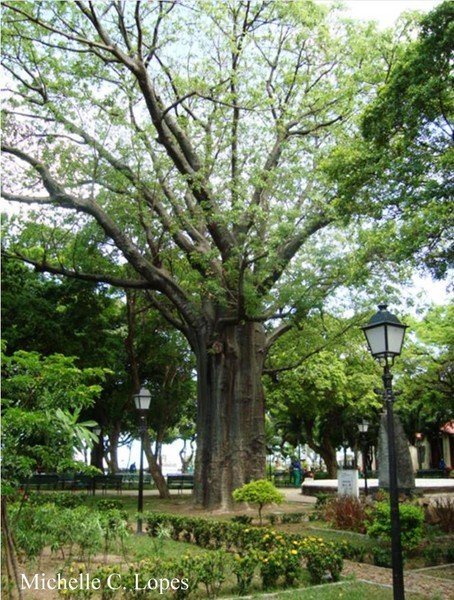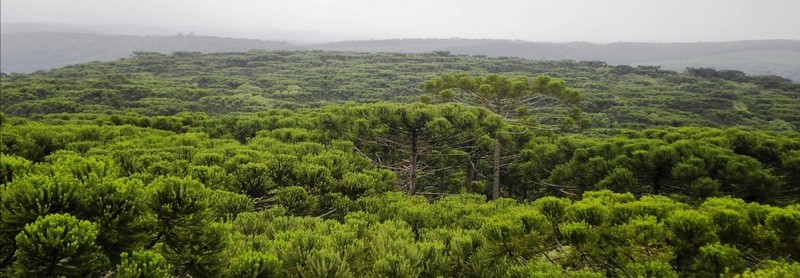 Foto 1 – Vista geral da espécie.
Foto 1 – Vista geral da espécie.
Família: Malvaceae.
Nome científico: Adansonia digitata L.
Nomes populares: baobá
DESCRIÇÃO DA ESPÉCIE
Árvore originária da África. Sua altura atinge até 20 m.
Folhas: composta digitadas.
Flores: solitárias brancas.
Frutos: cápsula, ovoide-elítico.
Floração: Dezembro/Março
Bibliografia consultada
LORENZI, H. Árvores exóticas no Brasil: madeireiras, ornamentais e aromáticas. Nova Odessa, SP: Instituto Plantarum, 2003.368 p.

My colleague, Dendrologist Gerson Luiz Lopes, from Irati, Brazil, identified the flower and fruit Beth sent us. It is Baobah, a tree planted in Brazil as ornamental. Its origin, however, is Africa. Baobabs reach heights of 5 to 30 m (16 to 98 ft) and have trunk diameters of 7 to 11 m (23 to 36 ft). Also known as Tree of Life, it can live thousands of years. The Panke Baobab in Zimbabwe was some 2,450 years old when it died in 2011, making it the oldest angiosperm ever documented, and two other trees — Dorslandboom in Namibia and Glencoe in South Africa — were estimated to be approximately 2,000 years old. It is a LEGEND, however, that it blooms every 50 years. Adult trees produce flowers EVERY YEAR. There are many other stories and traditions surrounding the baobab. Along the Zambezi River, many tribes believe that the baobab once grew upright, but it considered itself so much better than the lesser trees around it that eventually the gods decided to teach the baobab a lesson. They uprooted it and planted it upside down, in order to stop its boasting and teach humility. In other areas, specific trees have stories attached to them. Zambia’s Kafue National Park is home to a particularly large specimen, which the locals know as Kondanamwali (the tree that eats maidens). According to legend, the tree fell in love with four local girls, who shunned the tree and sought human husbands instead. In revenge, the tree pulled the maidens into its interior and kept them there forever. My friend in Brazil sent the following link to his online book, where he describes thousands of trees. More than 2 million consultations to his book have occurred. https://sites.unicentro.br/wp/manejoflorestal/11302-2/
Antonio J.´De Araujo obrigado pela Resposta. Gerson Luiz Lopes